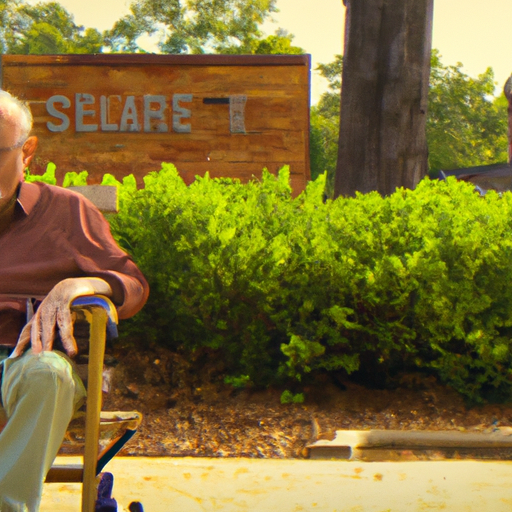Aging in place is a term used to describe the ability of older adults to remain in their own homes and communities as they age. As people age, they may experience physical, mental, and emotional changes that can make it difficult to stay in their own homes. Fortunately, there are a variety of strategies and tools available to help older adults stay healthy and safe while aging in place. These strategies and tools can help older adults maintain their independence, remain socially connected, and stay physically active. This article will discuss the benefits of aging in place, strategies and tools for staying healthy as we age, and resources for finding additional support.
The Benefits of Aging in Place: How to Maximize Quality of Life as We Age
As we age, the idea of aging in place—remaining in our own homes and communities—becomes increasingly attractive. Aging in place offers a number of benefits, from maintaining independence to preserving a sense of community. Here are some tips to help you maximize your quality of life as you age in place.
1. Stay Connected. Staying connected with family, friends, and your community is essential for maintaining a sense of purpose and belonging. Make sure to stay in touch with your loved ones, join a local club or organization, and take part in activities that interest you.
2. Stay Active. Exercise is important for both physical and mental health. Find activities that you enjoy and make them part of your daily routine. This could include walking, swimming, or even gardening.
3. Eat Well. Eating a balanced diet is essential for staying healthy as you age. Make sure to include plenty of fruits, vegetables, and whole grains in your meals.
4. Get Enough Sleep. Getting enough sleep is important for maintaining your energy levels and mental clarity. Aim for seven to eight hours of sleep each night.
5. Stay Safe. Make sure your home is safe and secure. Install grab bars in the bathroom, use non-slip mats in the shower, and make sure your home is well-lit.
6. Stay Informed. Staying informed about your health and the services available to you is essential for aging in place. Make sure to keep up with your doctor’s appointments and ask questions if you don’t understand something.
Aging in place can be a great way to maintain your independence and quality of life as you age. By following these tips, you can maximize your quality of life and enjoy the benefits of aging in place.
Home Modifications for Aging in Place: What You Need to Know
As we age, it can become more difficult to do everyday tasks. This is why many seniors choose to age in place, or remain in their own homes as they get older. To make this possible, many seniors need to make modifications to their homes.
If you’re considering aging in place, here’s what you need to know about home modifications.
Safety First
The most important thing to consider when making home modifications is safety. You want to make sure that your home is as safe as possible for you and your family. This means making sure that there are no tripping hazards, that all stairs have handrails, and that all electrical outlets are covered. You may also want to consider installing grab bars in the bathroom and other areas of the home.
Accessibility
Another important factor to consider is accessibility. You want to make sure that your home is easy to navigate, even if you’re using a wheelchair or walker. This means widening doorways, installing ramps, and making sure that all areas of the home are easily accessible.
Comfort
Finally, you want to make sure that your home is comfortable. This means making sure that the temperature is comfortable, that the furniture is comfortable, and that the lighting is adequate. You may also want to consider installing a stair lift or an elevator if you have multiple levels in your home.
Making home modifications can be a daunting task, but it’s worth it if it means that you can age in place. With the right modifications, you can make your home safe, accessible, and comfortable for years to come.
Technology for Aging in Place: What You Need to Know

As we age, many of us want to stay in our homes for as long as possible. Technology can help us do that, but it can be overwhelming to figure out what you need and how to use it. Here’s what you need to know about technology for aging in place.
1. Safety First
Safety is the most important factor when it comes to aging in place. Look for technology that can help you stay safe in your home, such as motion sensors, door and window alarms, and medical alert systems. These can alert you to potential dangers and help you get help if you need it.
2. Stay Connected
Staying connected with family and friends is important for your mental and emotional health. Look for technology that can help you stay in touch, such as video chat services, social media, and messaging apps.
3. Get Organized
Organization is key when it comes to aging in place. Look for technology that can help you stay organized, such as calendar apps, task management tools, and voice-activated assistants. These can help you keep track of appointments, tasks, and reminders.
4. Stay Active
Staying active is important for your physical and mental health. Look for technology that can help you stay active, such as fitness trackers, virtual exercise classes, and online games.
5. Get Help
If you need help with daily tasks, look for technology that can help you get it. There are services that can provide you with home care, grocery delivery, and other services.
Technology can be a great tool for aging in place. It can help you stay safe, connected, organized, active, and get the help you need. With the right technology, you can stay in your home for as long as possible.
Exercise and Nutrition for Aging in Place: How to Stay Healthy and Fit
As we age, it’s important to stay active and eat a healthy diet to maintain our health and fitness. Exercise and nutrition are key components of aging in place, and there are plenty of ways to stay healthy and fit. Here are some tips to help you stay active and eat right as you age.
Exercise
Exercise is essential for maintaining physical and mental health as we age. Regular physical activity can help reduce the risk of chronic diseases, improve balance and coordination, and boost energy levels. Here are some tips for staying active:
• Find an activity you enjoy. Whether it’s walking, swimming, or yoga, find an activity that you enjoy and stick with it.
• Make it a habit. Try to make exercise a regular part of your day. Set aside a specific time each day to exercise and make it a priority.
• Get creative. If you’re having trouble finding an activity you enjoy, try something new. There are plenty of ways to stay active, from dancing to gardening.
Nutrition
Eating a healthy diet is also important for staying healthy and fit as we age. Eating a balanced diet can help reduce the risk of chronic diseases, improve energy levels, and support overall health. Here are some tips for eating right:
• Eat a variety of foods. Eating a variety of foods from all the food groups can help ensure you’re getting all the nutrients you need.
• Choose healthy snacks. Instead of reaching for chips or candy, opt for healthier snacks like fruits, vegetables, nuts, and seeds.
• Limit processed foods. Try to limit processed foods and opt for whole, unprocessed foods whenever possible.
Staying healthy and fit as we age is important for aging in place. Exercise and nutrition are key components of staying active and eating right. With these tips, you can stay healthy and fit as you age.
Financial Planning for Aging in Place: How to Prepare for the Future
As we age, it’s important to plan for our future. Aging in place is a popular option for many seniors, but it’s important to make sure you’re financially prepared for the future. Here are some tips to help you plan for aging in place.
1. Make a budget. It’s important to have a budget in place so you know how much money you have to work with. Make sure to include all of your expenses, such as housing, utilities, food, and medical costs.
2. Consider long-term care insurance. Long-term care insurance can help cover the costs of home health care, assisted living, and nursing home care. It’s important to research different policies and find one that fits your needs and budget.
3. Save for retirement. Make sure you’re saving enough for retirement. Consider setting up an IRA or other retirement savings account.
4. Make a plan for your estate. Make sure you have a plan in place for your estate. This includes making a will, setting up a trust, and designating beneficiaries.
5. Talk to a financial advisor. A financial advisor can help you make the best decisions for your future. They can help you create a plan that fits your needs and goals.
Planning for aging in place can be a daunting task, but it’s important to make sure you’re financially prepared for the future. With the right planning and preparation, you can ensure that you’ll be able to age in place comfortably and securely.Aging in place is an important concept for older adults to consider as they age. It is important to have strategies and tools in place to help maintain health and independence. These strategies and tools can include physical activity, healthy eating, social engagement, and access to healthcare. With the right strategies and tools, older adults can remain healthy and independent as they age.



















